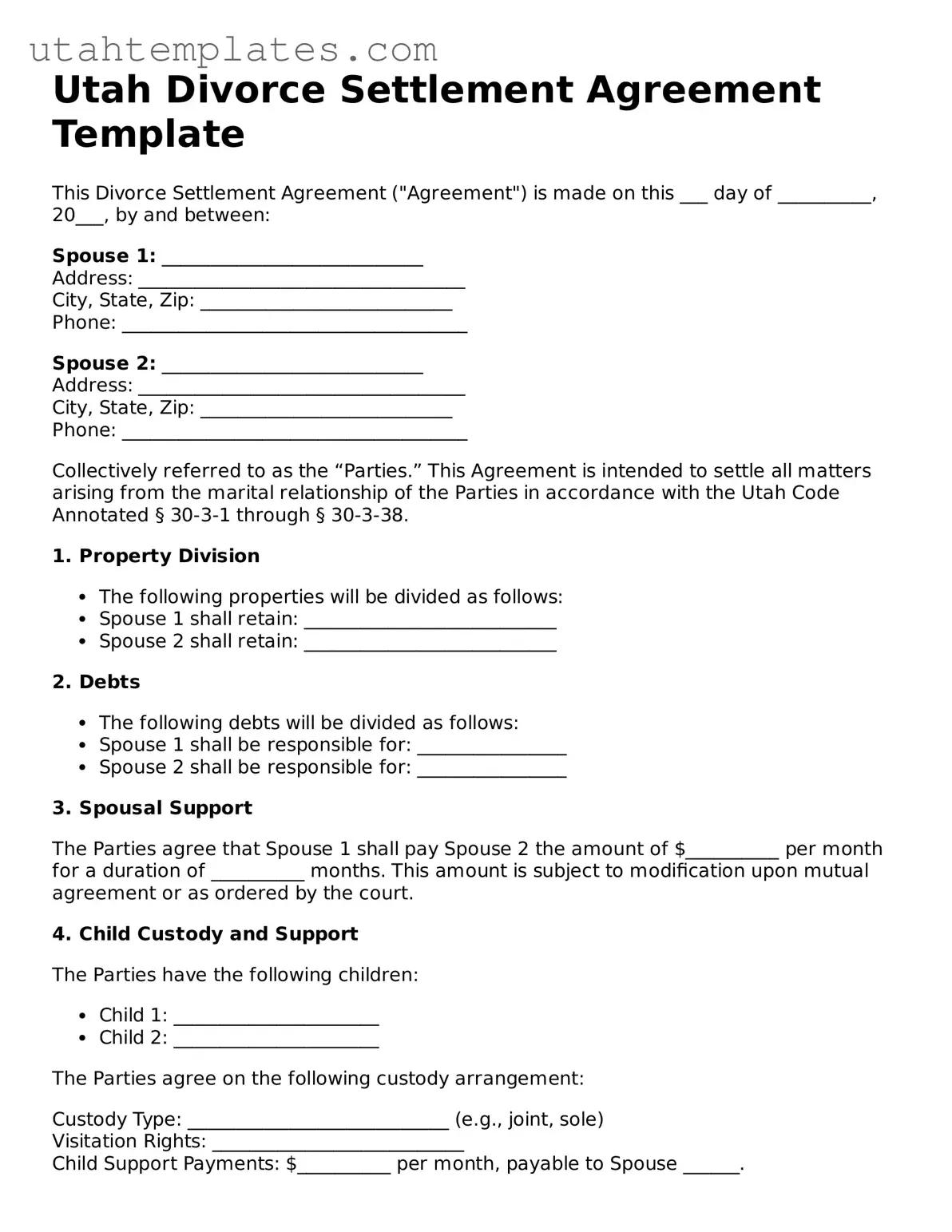Utah Divorce Settlement Agreement Template
This Divorce Settlement Agreement ("Agreement") is made on this ___ day of __________, 20___, by and between:
Spouse 1: ____________________________
Address: ___________________________________
City, State, Zip: ___________________________
Phone: _____________________________________
Spouse 2: ____________________________
Address: ___________________________________
City, State, Zip: ___________________________
Phone: _____________________________________
Collectively referred to as the “Parties.” This Agreement is intended to settle all matters arising from the marital relationship of the Parties in accordance with the Utah Code Annotated § 30-3-1 through § 30-3-38.
1. Property Division
- The following properties will be divided as follows:
- Spouse 1 shall retain: ___________________________
- Spouse 2 shall retain: ___________________________
2. Debts
- The following debts will be divided as follows:
- Spouse 1 shall be responsible for: ________________
- Spouse 2 shall be responsible for: ________________
3. Spousal Support
The Parties agree that Spouse 1 shall pay Spouse 2 the amount of $__________ per month for a duration of __________ months. This amount is subject to modification upon mutual agreement or as ordered by the court.
4. Child Custody and Support
The Parties have the following children:
- Child 1: ______________________
- Child 2: ______________________
The Parties agree on the following custody arrangement:
Custody Type: ____________________________ (e.g., joint, sole)
Visitation Rights: ___________________________
Child Support Payments: $__________ per month, payable to Spouse ______.
5. Miscellaneous
- This Agreement constitutes the entire agreement between the Parties.
- Any modifications must be in writing and signed by both Parties.
- In the event of a dispute, Parties agree to seek mediation before pursuing litigation.
IN WITNESS WHEREOF, the Parties have executed this Agreement as of the date first above written.
_______________________________
Spouse 1 Signature
_______________________________
Spouse 2 Signature
_______________________________
Date
